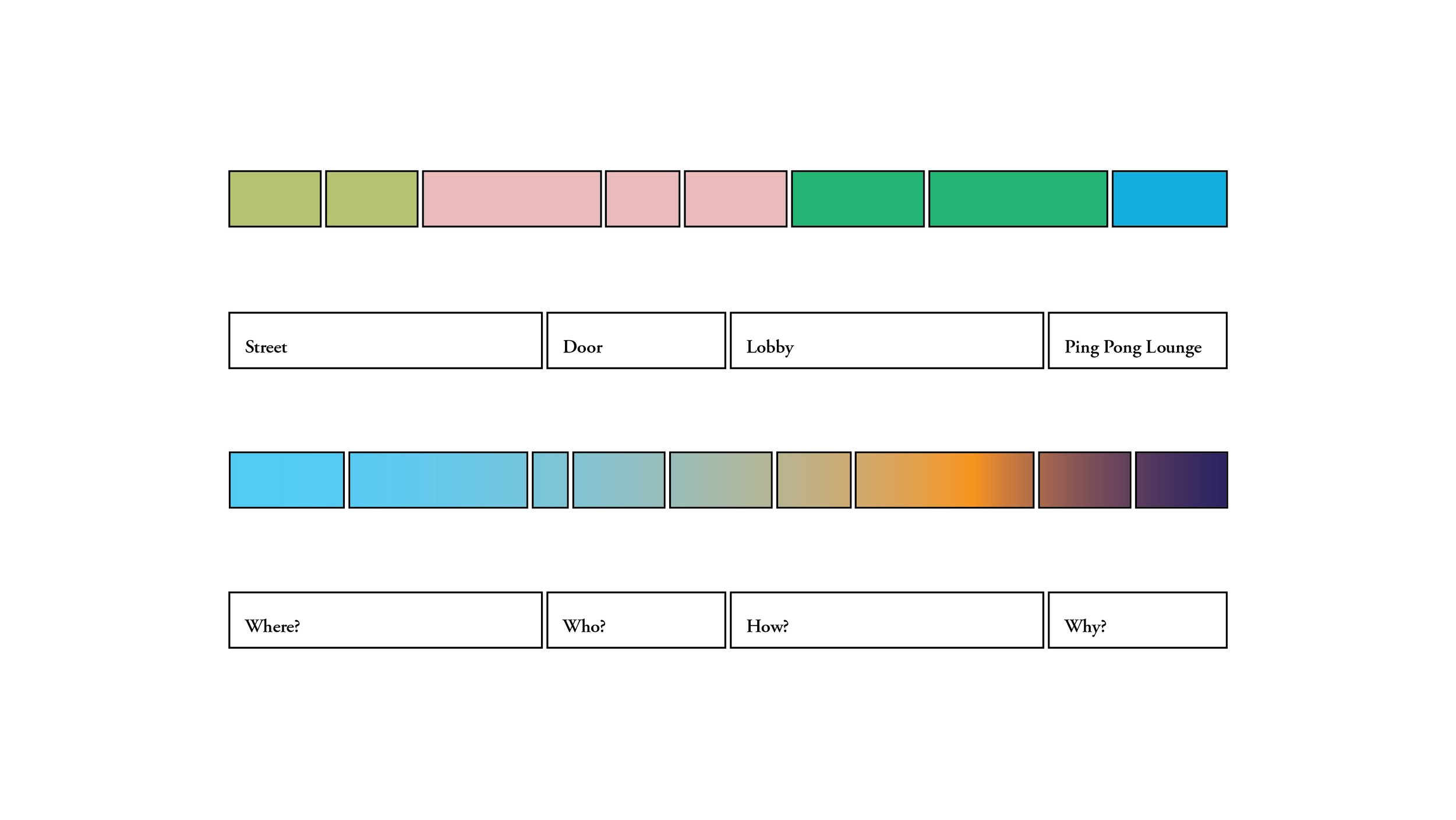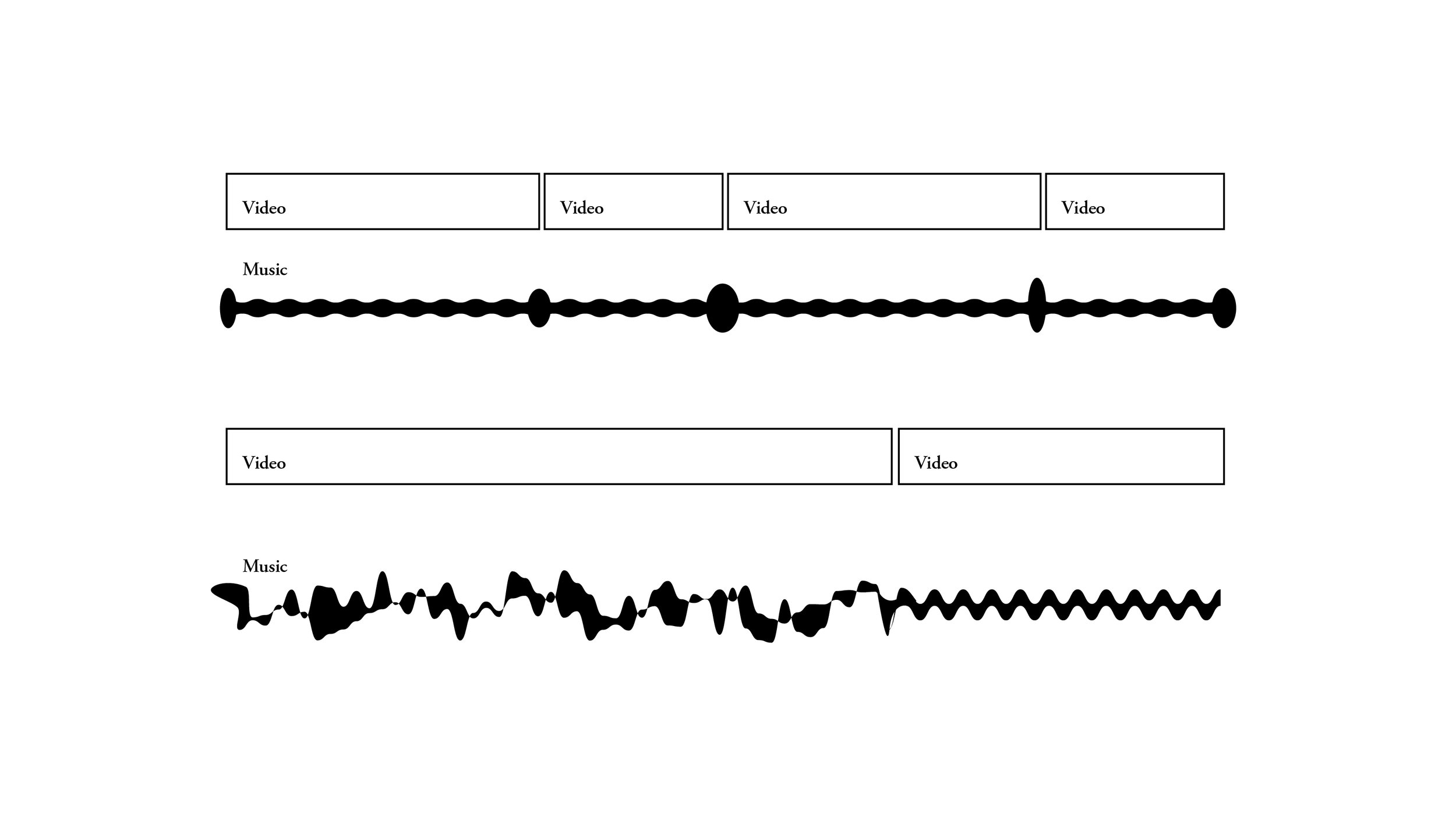The utility of editing, editing as a utensil—Alan Martín Segal
It was partly a decision and partly a consequence. Still, for a long time, I have used editing as a departure point in my practice.
It is possible to think of editing as a procedure (a more open term than a technique) that can take the form of a question used to enter a text; providing a purpose, a mission, a light. Editing has a proteic quality that allows us to deal with the fragmentary of the world, either through suturing or excision.
Sequencing is a constitutive part of audiovisual language and one of the editing operations, which involves organizing certain information, events, and stimuli in time. However, the way we sequence is informed by a specific idea of the world, a specific culture. To put it in a not-so-categorical way, there is peculiar rhetorical behavior in which a synchronicity occurs between a certain aesthetic language and a certain dominant political system.
With the excuse of portraying the Chelsea Recreation Center we generate a space, some sort of experimental workshop, to work on different approaches around editing. These alternative forms that we were looking for and emerged during the workshop were not necessarily refractory or critical; on the contrary, far from any moralizing attitude, there were just other shapes, other trajectories, other stories. During the workshop, we took any form as a guide to structure the materials we have filmed: the architecture of the recreation center, the way the light shines through the windows, the schedule of activities in the basketball court, etc. All these ways of organizing the center's life also helped us to organize our videos.
Whenever I think about these issues, I always return to a text that I always resist closing and always keep editing and updating. It is a log, a non-accurate autobiography that, between the narration and the essay, allows me to organize and perhaps see, from a distance, my path concerning the montage.



Note (audio commentary track)
The first draft of this text was never shared. The first shared draft is the second draft; the second draft is a third draft or the second draft with scaffolding. You are reading the final draft. The first real draft, which had an academic tone, served (now an invisible object) as an alert. An alarm that after the third “beep” began to sound in the form of a question:
From which place to write as an artist?
I choose a place of low key ignorance. From the hard sciences, I am moved by the acceptance of ignorance, this radical gesture of acceptance is the real engine of this discipline. I decided to insert a narrative twist to this statement since I felt uncomfortable with the lecturer tone of the first invisible actual draft. The narrative introduces an aesthetic problem, the verisimilitude. I use the act of building the verisimilitude as a deception to my own process of thinking. I add the task of dealing with an aesthetic issue to resolve a conceptual one. When doing one thing, another is done.
1. I will avoid proper names. The “nomastic-cargo” loads with meaning the characters, producing interference.
2. I will avoid the use of the first person. The “I” loads with affectivity the ideas, producing identification.
Note 2 (audio commentary track continues)
I usually work with constraints, without these constraints constraining me. Any given set of limits elicits a language expansion. Imagine that you are controlling a 3D modeled avatar of yourself. The avatar (that is simultaneously realistic and generic) is in a vast salt desert. If you press the “S” key of your keyboard, the avatar will make a step forward with its left foot, “D” for a right foot step forward. Alternating the “S” and “D” keys will allow you to walk through the flat salt mine. Five minutes is the average time to dominate this digital walking technique. Now imagine, please, a big stone interrupting your avatar’s trajectory. “S” and “D” are useless now because your avatar can’t walk through the stone. If I press the “A” key can my avatar perform a step to the left?
Players
A: Young film editor
J: Argentine documentalist
K: Cult Argentine composer living in Berlin
L: Assistant of K
W: Renowned American composer
2012. A starts to edit a documentary film about K, the Argentine composer based in Germany. J is the director of the project. J and A had already collaborated on other documentaries. Both shared the feeling of having reached a common language, a system of work that facilitates the always intricate process of editing. “System” is not the right word: it was the configuration of a shared subjectivity (A and J would say “criteria”). CMOS digital sensors are the rule. However, J still uses the Panasonic Pro AG-DVX100B camera. J said about it in a Skype conversation: “The pinnacle of the DV signal”. A collateral effect product of the equipment choice: the footage is very light and easy to share through the 2012’s internet. Weekly, J sent from Berlin to A the collected dailies via WeTransfer.
Note 3 (audio commentary track continues)
The tool’s agency on the practice is a cliché. Usually, relevant things become clichés. A line can be drawn with your finger, a piece of coal, a stick, a sable brush, a graphite pencil, a fountain pen, a mouse, a pen tablet. All these lines will be different lines. The tools used should be displayed: to quench the curiosity of some particular public; to provide procedural context, a cognitive and poetic map.
A received strict training as a film editor based on two pillars. One: the dramatic conflict; Lajos Egry was the bibliography and jurisprudence on this subject. Two: a set of rules that prevents the spectator from being distracted from the film’s diegesis, called MRI (model of institutional representation). The area between these two poles, a restrictive flowchart of concepts, works as a refuge, a safe place. Traditionally, editors visit that space to detect errors and to explain the success of some decision. It can be described as the delegation of the intuition into a belief system. Intuition, understood as an experiment with oneself, was discarded.
TC 00:00:00:00
TC 00:01:37:24
Long shot of a room. Window on the right is overexposed. The camera is on a tripod. The lens seems to be a 50 mm. The frame shakes because of a series of movements made by J (?) trying to regulate the horizon. Horizon corrected. Rhythmic clicks make vibrate the frame, while the exposition is corrected. Exposition corrected. Window on the right corner is correctly exposed. A wooden desk: a roll of orange polyamide corrugated tube, a red Ricordi score-book (illegible black typography). Two ergonomic Aeron chairs designed by Herman Miller (the left one is grey, the right one is black).
TC 00:01:37:24
TC 00:02:08:03
The light of the room fluctuates, very subtly, because of the clouds’ movement (or the wind, or the window’s curtains).
TC 00:02:08:03
TC 00:07:12:19
K appears from the right edge of the frame. K grab a segment of the orange polyamide corrugated tube. He uses a non-conventional tennis-like-grip to hold the tube, K waves it drawing circular movements in the air: this action generates a strange and unexpected sound. While performing, K explains the Bernoulli’s Principle to someone who is off the frame. L appears from the right edge of the frame and grab another segment of the orange polyamide corrugated tube. L imitates K’s non-conventional tennis-like-grip to hold the tube, L waves it drawing circular movements in the air: this action generates a strange sound. While performing, K comments on the possibility of composing a piece using as constructive elements the idea of legato and non-legato. “Dumb and Dumber,” says K looking at the camera.
K is in a continuous state of monologue. There is no footage of him composing; the work is recurrently delayed, L is an assistant without any task or duty.
K=lecturer
Projects = speculations
L=listener
Note 4 (audio commentary track continues)
The brief list of equivalences above aims to actualize the meaning of the words we initially use to name specific things (roles, concepts) and what those things end up being after a process.
The projects have a dimension that I would like to call potential. This dimension means that the project can remain passive (written in a notebook, described in a night walk, outlined in a proposal for a fund) or be activated. Passive or active, it will always be a project.
An old intuition lately consolidated: sequencing is highly absorptive.
The tape number 42 is contained in the third WeTransfer package. Almost a month of work. Reaching the end of the tape, K articulates an idea about composition: eventually, everything becomes melody. A further investigation allowed him to discover that the phrase is actually from W.
A found this phrase partially as a slogan, partly a as profound idea.
Deep idea + slogan + image = logo, the ultimate form of text.
A hand-drawn “Eventually, everything becomes melody” logo is hanging on the wall of the editing room. This image elicited some ideas about the editorial process, about the order that things should have. A starts to distrust the hegemonic narratives structures and conventions. Why not develop other possible forms of communication?
Editing while thinking about music. The so-called offset strategy: work with the means and tools available in a particular language to do what any other language can produce quite naturally.
Knowing your soulmate through found footage. Editing not should be about the things that occur before and after editing. But it is. As anyone who has gazed nine hours daily at the documentary footage, A developed an intimate and close relationship with the images and characters that passed through the Canvas and Source monitors of his editing software. The unilateral feeling of have experienced a shared moment with someone else is a disturbing cognitive scenario.
Buenos Aires. A is hiding behind a modernistic column outside an old poultry market. 23 steps from A’s location is L. 4 hours ago A started to chase L and discovered at least four things: L is a performer, K is a performer, K studio is a film studio, the J’s documentary feature was a fiction feature.
Part of this story is true; part is a lie.
Alan Martín Segal
September 2023
A meditation on architecture, sequence, and collage, artist Alan Martín Segal’s Activations program Eventually everything becomes a melody presented short films of the Chelsea Recreation Center created by its own members. The screening was the culmination of a collaborative process in which members captured footage of the center in response to creative prompts, then participated in an editing salon to transform the collective footage into kaleidoscopic video portraits.
Activations is a series of interdisciplinary public workshops designed by artists in response to civic spaces in New York City. Each activation invites participants to encounter a readymade site through the lens of an artistic practice, reimagining them as spaces of creative possibility.

